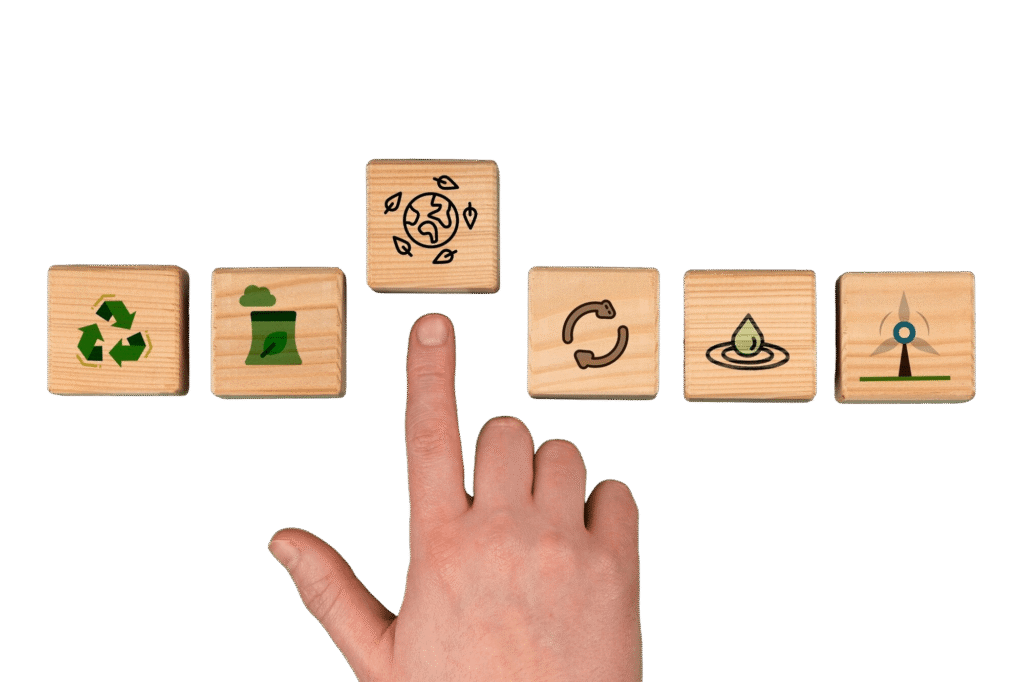
In an age where environmental concerns and lifestyle choices increasingly intersect, the concept of eco minimalism is future for emerging as a powerful movement that promises to reshape how we live.
This lifestyle combines the simplicity and intentionality of traditional minimalism with the urgent need for sustainability to protect our planet.
Eco minimalism not only simplifies your life but also fosters a positive environmental impact, financial savings, and improved mental well-being.
In this article, we’ll journey through the essence of sustainable eco minimalism is future, unpack its core principles, practical applications, and weigh the benefits alongside some challenges.
Whether you’re curious about adopting this lifestyle or looking for ways to deepen your commitment to sustainability, this comprehensive guide will provide you with valuable insights and actionable tips.
Table of Contents
Is Sustainable Eco Minimalism is Future Trend?
Sustainable eco minimalism is a hybrid lifestyle philosophy that blends two increasingly influential movements: minimalism and sustainability.
Minimalism champions living with less focusing on essentials, reducing clutter, and valuing quality over quantity.
Sustainability, on the other hand, is rooted in reducing environmental impact, promoting renewable resources, and supporting the health of the planet.
By fusing these ideas, eco minimalism is future for encouraging a lifestyle that is not only simpler but consciously aligned with ecological responsibility.
It goes beyond decluttering physical possessions and dives into how we consume, what we consume, and how those choices affect the environment.
This approach invites a deeper connection to nature and a mindful attitude toward everyday living.
Core Principles of Eco Minimalism is Future Trend Setter

Understanding eco minimalism starts with embracing its fundamental principles. These guide how you approach possessions, consumption, and your overall lifestyle:
1. Intentional Living
At the heart of eco minimalism is intentionality.
This means being mindful about what you own and consume.
Instead of accumulating numerous fast fashion items or disposable goods, you focus on purchasing fewer, higher-quality products that serve a meaningful purpose.
For example, investing in a few pieces of sustainable clothing that last for years rather than frequently buying cheap, short-lived garments is a hallmark of intentional living.
It’s about quality over quantity and making choices that align with your values.
2. Sustainable Choices for an Eco-Minimalism is Future
Sustainability is a cornerstone. This principle encourages products and practices that reduce environmental harm, such as:
- Reducing waste by avoiding single-use plastics.
- Choosing renewable or recycled materials.
- Recycling and composting to divert waste from landfills.
Simple actions like opting for reusable grocery bags and containers can significantly reduce your environmental footprint.
3. Simplified Lifestyle
Decluttering is more than tidying up; it’s about eliminating excess that no longer serves you. A simplified lifestyle leads to less waste and creates a harmonious, manageable living space.
Regularly auditing your belongings and donating or recycling items you don’t need helps maintain this balance. This practice fosters clarity and frees you from the burden of excess possessions.
4. Connection with Nature
Eco minimalism encourages integrating nature into your life.
This could mean using natural materials in your home, growing your own food, or simply spending more time outdoors.
Examples include choosing wooden furniture sourced sustainably or maintaining a small garden. This connection nurtures appreciation for the environment and enhances your well-being.
Benefits of Adopting Future’s Eco Minimalism
Choosing to live an eco minimalist for future lifestyle offers a variety of profound benefits, both personal and planetary.
1. Environmental Impact Reduction

By consuming less and opting for sustainable products, you actively reduce your carbon footprint.
For instance, using energy-efficient appliances like LED lighting can significantly lower household energy consumption.
These small but consistent choices help preserve natural resources and contribute to combating climate change.
2. Financial Savings
Minimalism naturally leads to spending less because you buy fewer items.
While sustainable products might have a higher upfront cost, their durability often means they save you money over time.
An example is investing in a high-quality reusable water bottle, which eliminates the need for repeatedly purchasing disposable plastic bottles, saving money and reducing waste.
3. Mental Clarity and Reduced Stress
A clutter-free environment is linked to a clearer mind and lower stress levels.
Studies show that people living in organized, minimalistic homes experience greater life satisfaction and mental well-being.
Removing excess possessions reduces the overwhelm that often comes with managing and maintaining them.
4. Enhanced Quality of Life
Eco minimalism is future shifts the focus from accumulating possessions to valuing experiences.
Spending time outdoors, engaging in community activities, and appreciating simple pleasures can lead to a richer, more fulfilling life.
5. Community Impact
This lifestyle fosters a sense of community by encouraging resource sharing, supporting local businesses, and participating in sustainability initiatives like community gardens.
Engaging with others who share your values strengthens social bonds and promotes collective environmental stewardship.
Practical Applications of Eco Minimalism is Future in Daily Life
Adopting eco minimalism doesn’t require a complete overhaul overnight.
Instead, it’s about integrating mindful choices across different areas of your life.
1. Home and Living Spaces
- Decluttering: Regularly assess your belongings and keep only what adds value.
- Sustainable Furniture: Opt for pieces made from bamboo, reclaimed wood, or other eco-friendly materials.
- Energy Efficiency: Use energy-saving appliances and LED lighting to reduce consumption.
2. Personal Care and Wellness
- Natural Products: Choose personal care items free from harmful chemicals and with eco-friendly packaging.
- Capsule Wardrobe: Build a versatile wardrobe with sustainable pieces that mix and match easily.
- Mindful Consumption: Prioritize routines that promote well-being without excess products or treatments.
3. Food and Nutrition
- Local Sourcing: Purchase from farmers markets to reduce transportation emissions and support local economies.
- Waste Reduction: Plan meals carefully to minimize food waste and compost organic leftovers.
- Sustainable Choices: Incorporate more plant-based meals, which generally have a lower environmental footprint compared to meat-heavy diets.
4. Transportation
- Eco-friendly Options: Use public transportation, bike, or walk whenever possible.
- Car Sharing: Consider ride-sharing services or owning fuel-efficient or electric vehicles.
- Remote Work: Work from home when feasible to reduce commuting emissions.
5. Technology and Gadgets
- Buy Less, Use Longer: Invest in high-quality electronics and maintain them well.
- Eco-friendly Choices: Choose devices with energy-efficient ratings and support sustainable companies.
- Digital Minimalism: Reduce digital clutter by limiting the number of devices and organizing digital spaces.
6. Waste Management
- Recycling and Composting: Set up robust systems at home to divert waste.
- Avoid Single-Use Items: Use reusable alternatives like metal straws, cloth bags, and glass containers.
- Upcycling: Transform old or unused items into new, useful products to extend their lifecycle.
Check the Pros and Cons of Eco Minimalism is Future Trending
While eco minimalism offers many advantages, it’s important to consider the potential challenges before fully committing to this lifestyle.
Pros
- Environmental Impact: Less waste and a smaller carbon footprint contribute to a healthier planet.
- Financial Benefits: Spending less on unnecessary items and investing in durable goods saves money long-term.
- Enhanced Well-being: A decluttered, simplified life reduces stress and promotes mental clarity.
- Community Engagement: Encourages participation in local initiatives, fostering a sense of belonging.
- Sustainable Living: Promotes harmony with nature and supports ecological balance.
Cons
- Initial Effort: Transitioning requires time and dedication to declutter and adopt new habits.
- Social Challenges: Friends and family accustomed to consumerism may resist or misunderstand your choices.
- Cost of Sustainable Products: Eco-friendly items often have higher upfront costs, which can be a barrier.
- Limited Convenience: Choosing fewer possessions and sustainable options may sometimes be less convenient.
- Emotional Attachment: Letting go of sentimental possessions can be emotionally difficult.
Conclusion: Embracing a Balanced and Sustainable Future
Eco minimalism is future is far more than a passing trend—it is a lifestyle that fosters profound changes in both personal well-being and the health of our planet.
By integrating mindful, sustainable choices into everyday life, you can create a balanced, fulfilling existence that resonates deeply with your values.
Every small change, from choosing reusable bags to decluttering your home, contributes to a larger movement toward sustainability and simplicity.
The journey may present challenges, but the rewards—in environmental impact, financial savings, mental clarity, and community connection—are well worth the effort.
Let us all strive to live more intentionally, sustainably, and in harmony with the natural world. Together, we can make eco minimalism is future trend that shapes a better tomorrow.
Stay mindful, stay sustainable.
